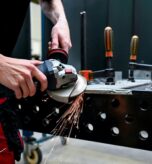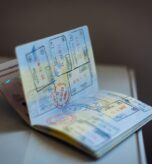Australia’s Skilled Occupation List (SOL) is critical for skilled workers seeking migration pathways. The list determines whether your profession qualifies for skilled visas and sets the foundation for your migration journey. This guide breaks down the steps to check if your profession is on the SOL and what to do next.
What is the skilled occupation list?
The SOL is a comprehensive list of in-demand professions in Australia. Occupations on the list align with Australia’s workforce needs and include categories like engineering, healthcare, IT, and trades. The list is divided into three key categories:
- Medium and long-term strategic skills list (MLTSSL): For long-term skilled visas like subclass 189 and 190.
- Short-term skilled occupation list (STSOL): For short-term visas like subclass 482.
- Regional occupation list (ROL): For regional migration programs such as subclass 491.
Step-by-Step guide to checking your occupation
- Visit the official website Access Australia’s Department of Home Affairs website or the relevant Skilled Occupation List page to find the most up-to-date information.
- Search for your occupation Use the search function to find your profession. Note which list (MLTSSL, STSOL, or ROL) your occupation falls under and the associated visa types.
- Review eligibility requirements Each occupation has specific eligibility criteria, including:
- Required qualifications and certifications.
- Relevant work experience.
- Associated assessing authority for skills evaluation.
- Verify skills assessment requirements Identify the assessing body for your profession, such as Engineers Australia or VETASSESS. Ensure your qualifications align with Australian standards.
- Check for regional opportunities Some occupations are prioritised in regional areas under the ROL, offering additional migration pathways for applicants willing to live and work in regional Australia.
Why is it important to check the SOL?
- Visa eligibility Your profession must be on the SOL to qualify for skilled visas like subclass 189, subclass 190 or subclass 491.
- Targeted migration pathways Occupations on the list are linked to specific visa subclasses, enabling faster processing and access to permanent residency.
- Industry-specific requirements Understanding your profession’s requirements ensures you meet the standards for migration and employment in Australia.
What to do if your profession isn’t on the List
If your occupation isn’t on the SOL, alternative pathways may still be available, such as:
- Employer sponsorship: Work with an Australian employer who can sponsor you under a relevant visa.
- Regional migration: Explore occupations in demand within regional areas.
- Skill adjustments: Consider upskilling or obtaining additional qualifications to align with listed occupations.
Navigating the Skilled Occupation List and its requirements can be challenging, but GO Access is here to support you. Our services include:
- SOL eligibility assessments: Determine if your profession qualifies for skilled migration.
- Skills assessment support: Assist with document preparation and submission to the relevant assessing authority.
- Alternative pathway advice: Explore options if your occupation isn’t currently listed.
The Skilled Occupation List plays a vital role in shaping your migration journey. By checking your profession’s eligibility and understanding its requirements, you can take the first step towards achieving your goals in Australia.
If you’re unsure whether your profession is on the list or need expert guidance, contact GO Access today. Let us help you unlock your pathway to success in Australia.






